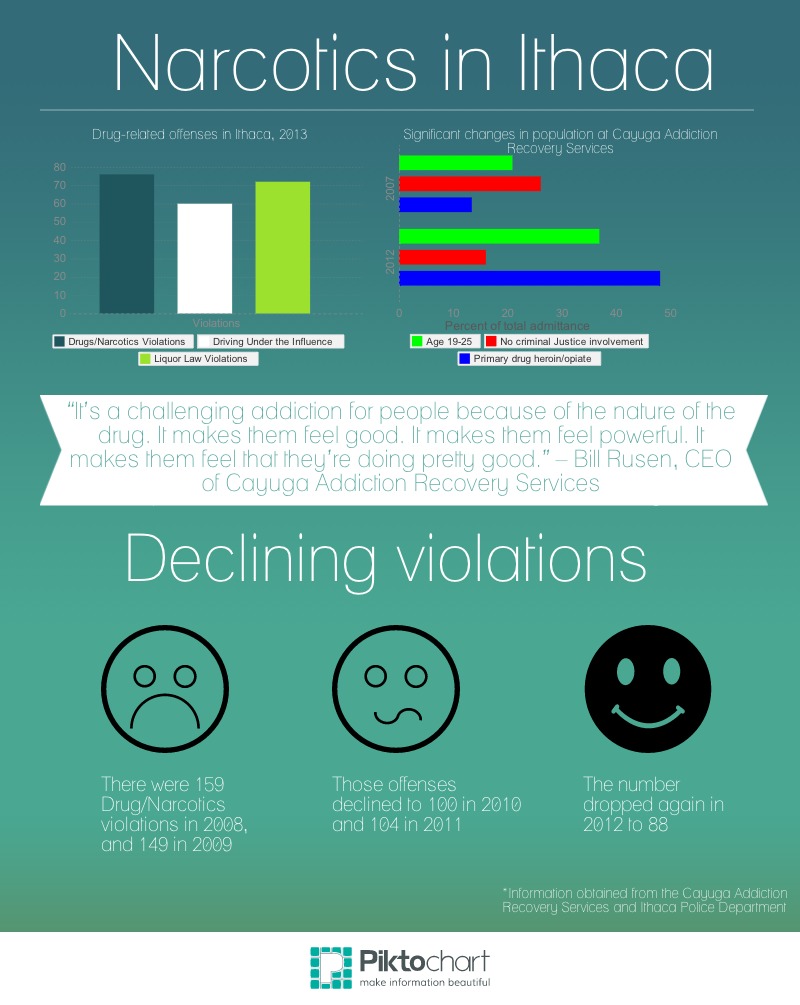That day, City of Ithaca Police responded to the scene, with assistance from the Tompkins County Sheriff and the Ithaca Fire Department Haz Mat Team, and discovered a half-dozen clear bottles of an unknown substance that appeared to be reacting and off-gassing. Preliminary department tests have shown them to be the remnants of a mobile meth lab.
No arrests have yet been made in the case, but Jamie Williamson, public information officer for the Ithaca Police, said the department has not seen that large of an influx in meth use and possession over the last several years, but has data showing that heroin is becoming a serious problem.
“Heroin is much more devastating than other drugs simply because when you go from recreational use to addiction to destruction, that cycle rears its ugly head much faster and with much more intensity than other drugs,” Williamson said.
The office of the Alcohol & Drug Council of Tompkins County is directly across the street from where the containers were found in the alley where E. Green Street and the overpass meet. Education and Prevention Director Stacy Cangelosi said she was not surprised meth was found there.
“It’s very isolated,” Cangelosi said. “It doesn’t seem like it because it’s right there on Green Street, but it’s very shady. I walk through there as fast as I can.”
In contrast to Tompkins County, Southern Tier communities are experiencing a huge increase in the production, possession and use of meth, according to Williamson.
“Our community and how well we’re doing here in Ithaca is almost an anomaly compared to all the other communities in upstate New York,” Williamson said. “We’re a more affluent community and we’re fortunate in that regard.”
Bill Rusen, Chief Executive Officer of Cayuga Addiction Recovery Services, said CARS does not see many patients with meth as their prime substance of addiction, but it has been a larger problem in neighboring counties.
“Many surrounding counties are more typical upstate counties in that they were agrarian-based economies,” Rusen said. “When that economy got hollowed out by big agribusiness buying up farms, methamphetamine became the way that people made a living, albeit in an illicit manner.”
Meth is not only an issue in less affluent counties in upstate New York, it has also become the primary industry throughout a big swath of middle America, Rusen said.
“When you look at the great plains and the small rural farm towns scattered all the way from the foothills of the Rockies to the Appalachians, a lot of that used to be small farm towns,” he said. “The idyllic picture that we have of American life at the beginning and middle of the 20th century may not have been as idyllic as we like to think.”
Photo courtesy of the Ithaca Journal














